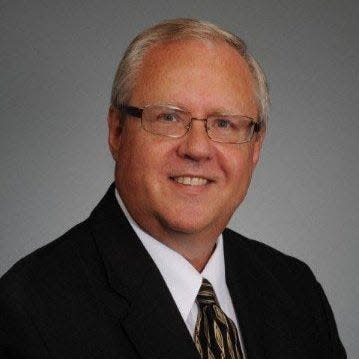Winter Solstice: Reflecting on the past year in the time of increasing darkness
My family ancestors came from a tradition of living off the land. My great grandmother grew up in the mountains of Tennessee. My mother and her family lived in southern Tennessee among the cotton rows, tobacco fields and animals that were a part of the family farm.
In this modern time, living in a city environment, I find it more challenging to be as connected with the cycles of nature as those who came before me. I do not have to work in the fields, I can simply go to the grocery and pick up what I need on a daily basis. I don’t really have to pay attention to frost days, rainy seasons or pulling out weeds in the garden or the fields - something I did for summer employment when I was young.
As I get older, I find that I miss that connection with the agricultural aspect of the earth and as a person on an Earth-Centered religious path, I want to be more aware of natural changes in the land as the calendar days clip by ever so swiftly. The Earth has a needful relationship with the sun and this relationship has a direct effect on the plants and animals that live on her, including us humans. The plants turn brown, most trees lose their colorful leaves and the gloomy, sometimes rainy days remind us how much we miss the green and sunny days of summer.
It is at this time of the year, when the Sun has its shortest slide across the skies of the Northern Hemisphere, I imagine our early ancestors who felt the colder weather approaching and watched as the earth went into hibernation. They looked to the sky and felt the warm rays of the sun dissipating each day and may have thought it was the end of the world as they knew it. How would they every survive without the sun?
The Winter Solstice will occur on December 21st this year, at 4:48 p.m. Eastern Standard Time. We now know that slowly, beginning at the Winter Solstice, the earth begins its tilt back the other way exposing those of us up north, to days with lengthening minutes of light. We know that the days grow longer and the nights shorter and the plant life that is protecting itself against the cold and dark, is still a few months away from its return to green but the process begins on the Winter Solstice.
This cycle repeats every year and the days grow longer until the sun is at its peak around the third week of June, for the Summer Solstice. At that point the days begin to get shorter and the night longer, by minutes. Our Earth’s pattern reflecting the natural cycle of birth, death and rebirth. There is a tradition, for some, that when the sun is at its peak, on the Summer Solstice, a small mirror is exposed to the brightness and warmth of the sun and then wrapped with a cloth. The mirror is brought out during the Winter Solstice and reflected in the mirror is a candle flame. The captured strength of that summer Solstice sun, gives back its essence during this dark time and helps coax the sun’s light and warmth back to us.
For many who practice an Earth-Centered religion, the time of increasing darkness and quiet allows one to reflect on the past year, to evaluate successes and recognize those things in one’s life that need to be let go. One can look at past challenges, future goals and set a plan for the year ahead. Winter Solstice is a beginning of a new year. A time to let candles glow and open oneself to the possibilities of what is to come. It is a time to gather family and friends to celebrate the return of the Sun.

Ron is Co-Facilitator of the Louisville Covenant of Unitarian Universalist Pagans (CUUPS) group and on the Board of Trustees of the CUUPS National Organization. He is a member of Pagan Federation International and will be attending the Parliament of World's Religions this summer. He can be reached at cuups@firstulou.org.
This article originally appeared on Louisville Courier Journal: Winter Solstice: Reflecting on the past year as the darkness increases
